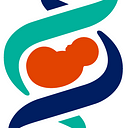New Name, New Logo, SAME Critical Mission. Will You Join Us?
By Christine Perdan Curran, Northern Kentucky University
President, Society for Birth Defects Research and Prevention
The Teratology Society is proud to announce a new name and logo to celebrate its long history and dedication to protecting the world’s most vulnerable population through the combined efforts of scientists and clinicians. As the Society approaches its 60th Anniversary, it’s a tribute to the important work we do and clearly communicates the impact and value of our scientific efforts.
When my mother-in-law told me that my research was too complicated to understand, I made it simple. I told her we’re trying to “save the babies.”
When a colleague asked me what we do, I answered “the most important work on Earth-protecting the next generation.”
As we considered a change to our name and logo, it was clear that to improve Society recognition and communicate effectively, we needed to simplify our message, much as I had done with my mother-in-law and colleague. The conclusion was the result of careful, deliberative work — great ideas were shared, tried, tested, and tested again.
The result was a name that clearly describes our work and a logo that focuses on the positive results of our work: a healthy child supported and swaddled by the protective arms of scientists and clinicians. Our history is honored as our new name rests solidly on our founders’ legacy.
From the early 1960s when the Society founders tackled important questions about chromosomal abnormalities and the horrors of thalidomide, our collaborative approach has led to scientific breakthroughs that informed public policy and clinical practice. Examples include the recognition of fetal alcohol syndrome, warnings about excessive Vitamin A use during pregnancy as well as the critical importance of folate in preventing neural tube defects.
We still have a great deal of important work to do collectively and collaboratively. One in 33 U.S. babies is born with a birth defect. Worldwide, more than 8 million babies are affected each year. Fortunately, our transdisciplinary and transformative science has positioned BDRP well to address these continuing concerns. Examples include innovative research on epigenetics, single cell transcriptomics, and computational methods and fast action by alert clinicians to respond to the risks of Zika virus during pregnancy and neonatal abstinence syndrome in the wake of the opioid epidemic.
I encourage current members and future members to learn more as we celebrate our 60th Anniversary in Charleston SC June 27 to July 1st 2020 at our Annual Meeting “Honoring Teratology’s Roots, Growing a Healthier Future.”
We strongly support our trainees with travel awards, mentoring and education resources, such as our Primer, and offer professional development to all.
I welcome you to join us in the most important and most rewarding work on Earth.
About the Author
Christine Perdan Curran, PhD, is a professor in the Department of Biological Sciences at Northern Kentucky University. She teaches and conducts research in the areas of developmental neurotoxicology, gene-environment interactions, persistent organic pollutants, as well as traffic-related air pollution, microbiome, and energy drink toxicity.
More about the Society for Birth Defects Research and Prevention (BDRP)
To understand and prevent birth defects and disorders of developmental and reproductive origin, BDRP promotes multi-disciplinary research and exchange of ideas; communicates information to health professionals, decision-makers, and the public; and provides education and training.
Scientists interested in or already involved in research related to topics mentioned in this blog are encouraged to join BDRP and attend the 60th Annual Meeting June 27 — July 1, 2020, the premier source for cutting-edge research and authoritative information related to birth defects and developmentally-mediated disorders. Our members include those specializing in cell and molecular biology, developmental biology and toxicology, reproduction and endocrinology, epidemiology, nutritional biochemistry, and genetics, as well as the clinical disciplines of prenatal medicine, pediatrics, obstetrics, neonatology, medical genetics, and teratogen risk counseling. In addition, BDRP publishes the scientific journal, Birth Defects Research. Learn more at www.birthdefectsresearch.org. Find BDRP on LinkedIn, Facebook, Twitter and YouTube.
